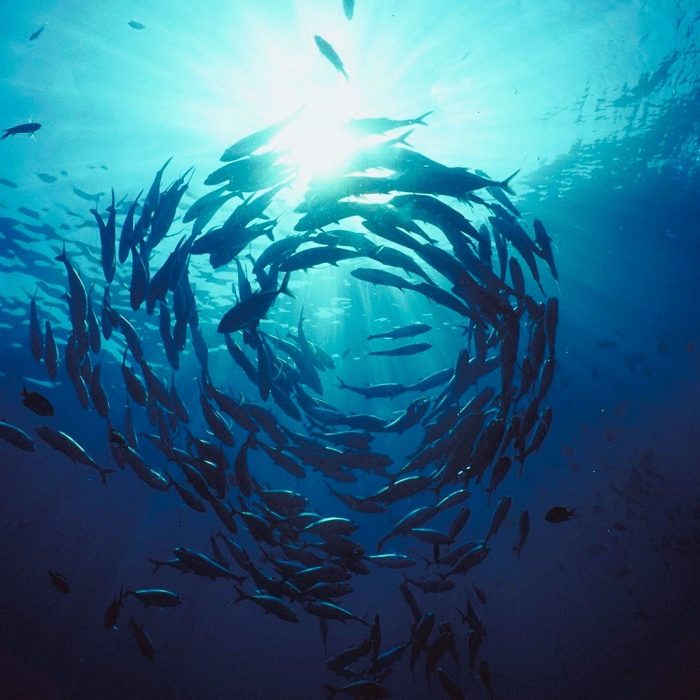IMOS FishSOOP


Our oceans are changing and we need measurements to model the future
Recently, marine heatwaves have hit Australian waters leading to temperatures well above normal. These higher temperatures may impact fish populations, and currently we do not know how deep they extend or how they affect fished species.
We are working with fishers to collect real-time ocean observations where it matters most. Just like weather stations help increase the accuracy of atmospheric weather forecasting, getting more ocean observations helps us improve ocean models, and help the fishing industry optimise its resources by gaining a better understanding of the relationship between catches and sea temperature.
How does it work?
-

Our technology partner, Zebra-Tech, has developed a compact, low-cost temperature sensor (the Moana sensor) that can be attached to many types of commercial or recreational fishing gear. It operates with minimal human intervention and communicates directly to a solar powered deck box.
-

Fishers have always been ocean experts. The Moana sensor puts ocean data collection back into the hands of those who work on, and depend upon, the sea.
We need subsurface marine measurements to understand how the ocean is changing below the surface. International ocean observing programmes such as Argo provide some deepwater data offshore but our subsurface coastal waters are not well monitored. Fishing vessels operate in areas where we have few subsurface ocean measurements, and where environmental change is having a huge impact.
There are thousands of vessels operating around Australia and across the South Pacific. This network of fishing vessels can collectively provide cost-effective, real-time subsurface data in our vast EEZ and beyond.
-

Participating fishers deploy small self-contained temperature sensors on their fishing gear, and a standalone, solar-powered deck unit on the vessel.
The sensor collects data every time the gear is deployed. After the installation, the system needs little to no intervention.
-
You will be able to access your individual vessel temperature data (with pressure and time). Sensor measurements will be made available online as downloadable files and sent to you via email within 1 hour of data reception.
You can compare sensor data with your personal catch information and understand relationships between catch and temperature.
-

We are working to further the understanding of the link between water temperature at depth and fish distribution and abundance. The fishing industry can provide very valuable ocean observations on an unprecedented scale, which can be used to answer a range of questions. We can use the data in near real time to improve our ocean forecast models.
In the longer term, we hope the data will assist in standardising catch rates in our fisheries stock assessment models. Furthermore, better ocean data will improve our understanding of general ocean warming, marine heatwave events, temperature impacts on the relative or total abundance of species, species range shift, and the impact of this on fisheries productivity.
-
Download a copy of the five information sheets below and keep them with you when travelling with the moana sensor and deckbox to assist in responding to questions from transit officials.
Contact details
Project and installations
Data questions
Frequently Asked Questions (FAQ)
-
We can attach the sensors to longlines, netting, pots, and trawling equipment. We have a range of protective housings and brackets to simplify sensor mounting.
-
The only information collected and shared will be temperature, depth, time and position at regular intervals during your fishing operations. Detailed vertical temperature profile measuring every 1m depth between the surface and 200m, every 4m between 200m and 1000m on the way up and down, and data every 5 mins while at a constant depth (such as in a pot, or on a line).
-
No catch information is collected or shared. This is your private information and we do not have access to it.
-
When the Moana sensor comes out of the water, it automatically offloads its data via Bluetooth to a small, standalone, weather-proof, deck unit. You do not need to do anything during this process. Data are then automatically transferred to our secure, cloud-based servers.

The deck unit
-
Data are anonymised and then sent to directly to the global telecommunications system where they can be accessed only by authorised national weather services (e.g. BoM). They use the data in their ocean models to improve tomorrow’s ocean and atmospheric forecasts.
For example, knowing the temperature of the upper ocean can help us predict cyclone tracks more accurately. Additionally, the temperature data are stored on our UNSW database for processing before being publicly shared anonymously, under the Creative Commons License 4.0 through IMOS on the Australian Ocean Data Network (AODN).
Measurements collected by the sensor are emailed back to the vessel that collected them within 1 hour of reception as a plot and in spreadsheet format.


-
We will share the temperature, depth, time and position data collected publicly on the AODN under the Creative Commons License 4.0. If you are concerned about your fishing location being shared, please speak with us before installing the sensor and deck unit.
-
We will establish this upfront. The sensor’s battery lasts for two years, after which you will need to send it back to us for battery change and recalibration.
-
The data pathway is funded by IMOS, but we require industry co-investment to cover equipment purchase and operating costs. Factors such as the number of sensors affect the degree of co-investment required. If you’d like to discuss entry to the project, email fishsoop@unsw.edu.au or fill out our expression of interest form via this link, opens in a new window.
International connections
We're part of the international Fishing Vessel Ocean Observing Network (FVON, opens in a new window) which is dedicated to the advancement of ocean observing in partnership with the fishing industry, globally.

